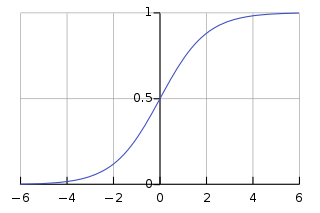Imagine, Possible, Test, Prove
Questions
I was trying to understand a paper by a friend who does evolutionary algorithms. I approached it several times and finally it was clear enough in me to spark a new awareness about the world. It was one of those moments where I saw so much more clearly how the very things in front of me relate to each other. Was this already obvious to all of you?
Prove it.
So a map of information in my head shifted. Are evolutionary algorithms within the domain of science or math? It uses both. Lots of science uses math, of course. But what I didn’t feel clear about was that math has different criteria than science. Math is deductive. Math is axiomatic. It is a field built of arguments on what is self evident, becoming ever more abstract, perhaps, but always building on what can be logically proven from what is self-evident. Math is a field for what is absolutely proven. And thus the old doesn’t get tossed out when a new piece of math becomes accepted. It is accrued and should continue to be logically coherent. Math is evolutionary by accrual.
Test it.
Science is not. I am not saying science is not logically coherent exactly. Oh wait, yes, I am. We can see that in how the explanations that we currently accept about large scale objects (astronomy) are not consistent with the explanations on the small scale (particle physics). Science is about developing explanations of the world that can be tested. Science is inductive. And current science theories are accepted under the condition that, when another theory gets presented that applies in more cases and especially in more edge cases, then the new explanation should be adopted as a more thorough and useful one. So science will replace old explanations with new – more nuanced – explanations.
These explanations are called theories. And they are built of hypothesis that are then tested using specific criteria determined by the field and traditions of science. Science is itself evolutionary by repair or replacement, not just accrual.
Sums
So Math is the realm of what is proven. And Science is the realm of what is tested. I was deliberating on that distinction, which started to seem obvious to me – as if I had known it since I was a child. Somehow as an adult, the information seemed like a revelation.
Great, but I want to know how this is useful.
For example, if we are discussing climate change, and you want to have the conversation from the criteria of math, then I need to make some computations that can be derived from self-evident axioms. And once those are known, then they are true. Period. Not up for debate, really. The proof is there or not there. But if we are discussing climate change, and I want to have the conversation from the criteria of science, then you need to form a hypothesis about some observable phenomenon, and then we can test it. The more times I can test it and get the same result, the more my explanation will be taken seriously. Right now climate deniers are denigrating climate science by saying that it fails to meet the criteria of Math – proven. And the scientists are at a loss, because of course man made climate science is a theory – a story we are testing out that isn’t proven or even provable. It is “just a theory” like gravity is “just a theory” too.
Possibilities
I was contemplating all this when I picked up “Tarrying with the Negative: Kant, Hegel, and the Critique of Ideology“ by Žižek to read on the plane to Paris. As one does, of course. Žižek is perfect plane reading (not). Watch his videos instead. I like his RSA Animate as a gateway to his work. In any case, he is ranting about philosophy and critical theory, and he says philosophy is about the possible. Again, click. Here I am a philosophy major, and I had not thought of philosophy being about how we explore what might be possible. But now it makes sense to me.
So then I started to imagine that Logic might exist on a plane or dimension between Math and Philosophy. And that Epistemology – the study of what can be known and how we know – might exist on the plane between science and philosophy. A foam of fields started to emerge in my head, all bubbly.
And I wondered what might be missing.
Imagine
Art is the realm of what we can imagine. It doesn’t have to be proven or tested or even be considered as possible. It orients toward imagination. The Art world is having a large conversation about imagination across cultures and time periods.
Jay Standish has developed an alternate visual at open door.
Now what?
Chewing on all this and not seeing where to bring it up at the Climate Science event Transformations, where I was speaking in Europe, I continued to mull it over. After several conversations with people in San Francisco (Keki Burjorjee – the Evolutionary Algorithms person, John Hagel, and several others) I am sharing it with you here. What I gathered from those additional conversations is how to apply this understanding.
1. What conversation are you having? If you are struggling to make progress on a conversation, ask which domain each person is coming to the conversation from. See the climate science example above.
2. What narrative do you want to be creating? Is your narrative about tests, provability, possibility, or imagination?
3. What is the dominant narrative or where do you put yourself on the various planes? For example, I primarily come from a mix of philosophy and science. I like to consider what is possible and then I like to test it. I am only interested in the possible that can then be tried out. It is a bit like a personality quiz.






